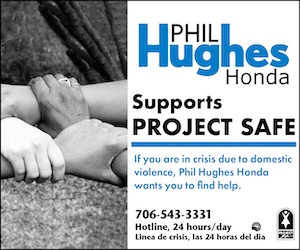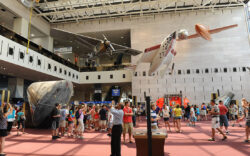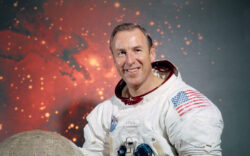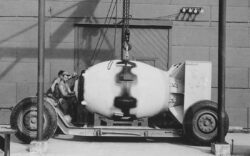Always a powder keg region, the Middle East is again embroiled in war after Hamas launched surprise terror attacks on Israel earlier this month. The death toll is mounting on both the Israeli and Palestinian sides of the conflict, and video footage of the latest carnage in the Middle East is chillingly reminiscent of the grim and grisly TV news broadcasts of the ongoing war between Russia and Ukraine.
America was involved in a long and bloody war in the Middle East 20 years ago, when the United States invaded Iraq in 2003 in the aftermath of the 9/11 terrorist attacks on this nation in 2001. Though none of the 9/11 terrorists were Iraqis, the White House team led by President George Bush and Vice President Dick Cheney was hellbent on war. They got it, and here in Athens the daily newspaper editorialized that the invasion would be a quick war with victory assured, thanks to superior U.S. technology.
It didn’t turn out that way. Instead, the war would last for eight years, nearly 4,500 U.S. military men and women would be killed in the conflict, and more than 32,000 would be wounded. Iraqi civilian deaths from the war are believed to number around 200,000. The war cost this nation about $1 trillion. The Iraq War’s cost in blood and treasure caused the resurgence of the American anti-war movement as peace marchers hit the streets of Washington, D.C., even before the war began. I went to the nation’s capital and other cities several times during the war to document the dissident peace movement that rose up in response to the invasion.
On Oct. 26, 2002, I was in Washington along with an estimated 100,000 citizens who rallied in the hope of stopping the war before it started. Those hopes were dashed when the war began a few months later, but the march showed a sense of solidarity and determination that was underlined when singer Patti Smith sang to the immense crowd that “the people have the power.”
Less than three months later, on Jan. 18, 2003, I was again on the scene in Washington as an even larger multitude marched through the streets of the historic old city in a peace demonstration that D.C. Police Chief Charles Ramsey called “one of the biggest ones we have had.” The march coincided with the national Martin Luther King Jr. holiday, and King’s opposition to the Vietnam War in the 1960s was echoed by the crowd that marched against the Iraq War in 2003. At that rally I talked with Vietnam veteran and Born on the Fourth of July author Ron Kovic, who told me, “My love of country brings me here today, and my faith that my country is going to renew itself and be reborn and we are going to stop this war… This is an exciting moment for all of us to be alive.”
Washington was again the scene of a large peace rally that I attended on Oct. 25, 2003. By that time, casualties were mounting in post-invasion Iraq, and the most moving speech of the day was given by Fernando Suarez, whose U.S. Marine son had been killed in the first days of the Iraq War. “We don’t need anymore dead,” said the grieving father. “We need to make Mr. Bush understand that he’s not the owner of the lives of our children. Bush is not the owner of America. You are the owners of America. How many gallons of blood does Bush need to fill his tank of oil? We don’t want one more drop of the blood of our children. We have to raise our voices and ask for peace.”
Americans rallied for peace in the Middle East 20 years ago. Today that region is again ravaged by war, and the world worries that the conflict could widen and spread. The words of psychiatrist and Holocaust survivor Victor Frankl are more apt than ever today: “Since Auschwitz we know what man is capable of, and since Hiroshima we know what is at stake.”
Like what you just read? Support Flagpole by making a donation today. Every dollar you give helps fund our ongoing mission to provide Athens with quality, independent journalism.









